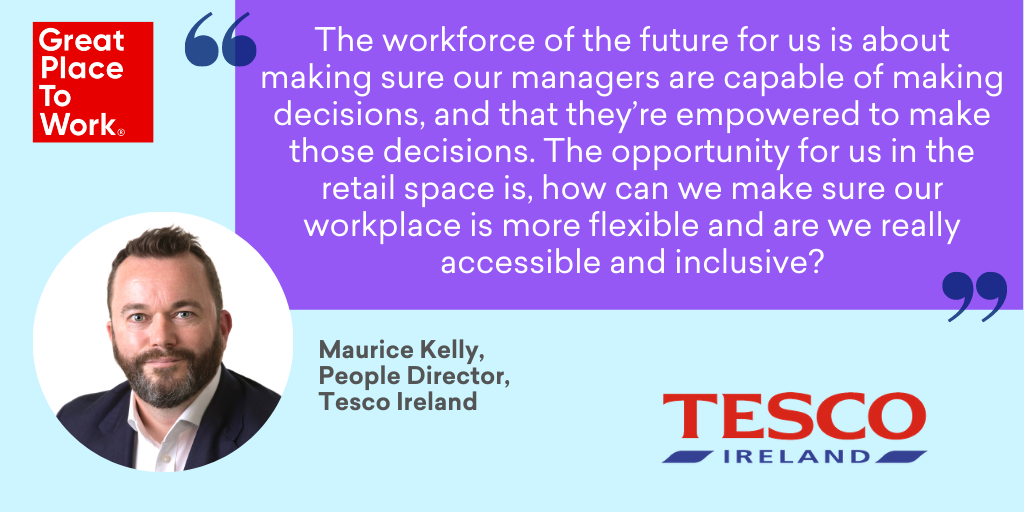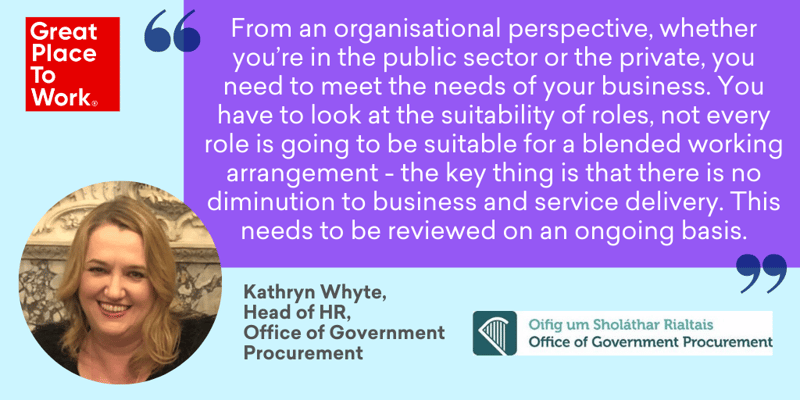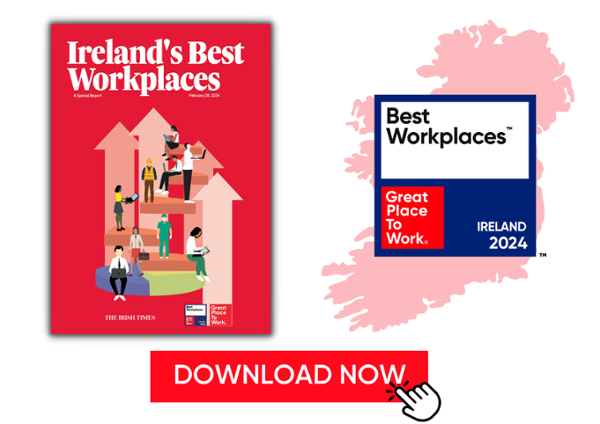Our Future of Work series continued with a conversation with Maurice Kelly, People Director at Tesco Ireland and Kathryn Whyte, Head of HR at the Office of Government Procurement discussing their plans for a hybrid model of working strategy within their organisations. Below you will find some key points from each panellist.
Maurice Kelly
People Director
Tesco Ireland

- In considering the future of work for your organisation, asking colleagues what works well, what could be better and what would make your work-life balance better, can provide valuable insights to develop a plan moving forward.
- Developing a hybrid model requires the group to collaborate and determine what the role of the office will be. By drawing on the perspectives of employees, organisations can then determine reasons why they will need to come together in a physical space.
- On the topic of work-life balance, a one size fits all approach as dictated by policies can be problematic. A more effective strategy is to engage with staff on an individual level, drawing out what areas are important to them and developing solutions together.
- While a hybrid or remote working model holds many benefits for employees, business performance must be front and centre. However, offering staff more flexibility can improve morale resulting in happier employees, which trickles into interactions with customers.
- It must be acknowledged that there are differences between those who can work remotely and those who cannot. It is vital to show value for these roles equally and to ensure that each cohort remains cognisant of the challenges faced by the other.
Kathryn Whyte
Head of People and Culture
The Office of Government Procurement

- Leadership comfort with remote working arrangements is crucial in supporting the roll out, as such transparency and openness are vital, staff need to feel comfortable to share their experiences working in a hybrid model to address emerging issues with leaders.
- With all that occurred over the last year, HR professionals have needed to be reactive in their approaches. However, it is also necessary to develop an overarching people strategy, work towards objectives and reflect on the progress made in relation to them.
- Keeping a dispersed workforce engaged and connected requires building practices that support discussion in a remote setting. One way of doing this is through a community of practice initiative, where staff come together to share new ideas in a virtual setting.
- Organisations need to consider how their wellbeing strategy applies in a hybrid model, this could include providing resources on working from home while parenting, mindfulness or issues that are not commonly featured in workplace wellbeing programmes.
- For roles which require a niche skillset, the ability to offer remote working accommodations increases the pool of available talent. It is then possible to hire individuals that would not previously have been deemed suitable for the role due to their proximity to the office.
Click the link to watch back the full session on the New Hybrid Model.
More resources on this topic:

About Great Place to Work®
Great Place to Work® is the global authority on workplace culture. We help organisations quantify their culture and produce better business results by creating a high-trust work experience for all employees. We recognise Great Place to Work-Certified™ companies and the Best Workplaces™ in more than 60 countries. To join the thousands of companies that have committed to building high-trust company cultures that help them attract, retain and take care of their people, contact us about getting Certified today.
